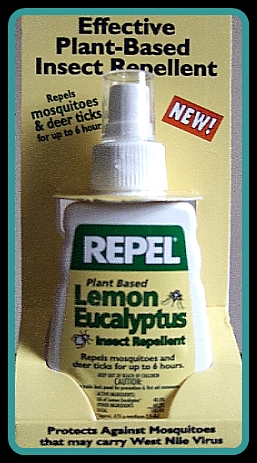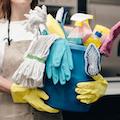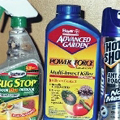“Dedicated to finding effective solutions for bird mite infestations of humans and their environment, encouraging those afflicted, facilitating research and a better understanding of human parasitosis.”
Bird Mite Infestation Tips & Strategies
Parasitic mites can be introduced into the home environment in numerous ways. A vacated bird’s nest is just one scenario. The family cat could bring home an infested bird or rodent. Used furniture, carpeting, and clothing, can also be a harbinger of mites. Landscaping material could be host to straw itch mites. Although this website is dedicated to bird mite infestation, many of the strategies presented here can also be beneficial for other types of mites encountered in the home.
ENVIRONMENT
Bird mites tend to wander away from a vacated birds nest in late spring and early summer. They will then look for an appropriate host and frequently it is a person in the nearest house or apartment. To avoid being the recipient of these unwanted guests, remove bird feeders and birdhouses from the yard and trim tree limbs near the house. Be wary of birds nesting in nearby trees, and underneath window air conditioners. To remove a vacated nest; wear vinyl gloves, long pants and shirt, and place the nest in a sealed bag in the trash. Clothes should be removed and washed immediately. Spray around eaves and windows with an effective miticide.
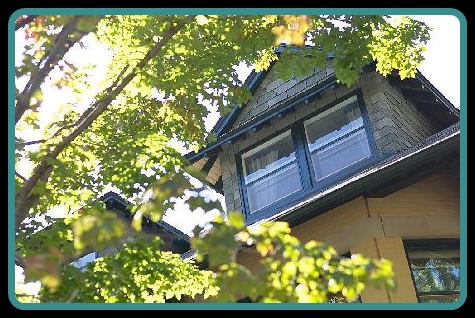
To avoid being the host to unwanted bird mite guests, trim overhanging tree limbs and branches in the spring. Also, trim shrubs and over-growth near windows. Use screening to cover chimneys, broken eaves, and other places where birds can build nests on the home.
Small birds often will build a nest underneath a window air conditioner unit, hidden from sight. It provides protection from predators and the weather in the spring and summer. Unfortunately, they often leave behind bird mites after the young birds leave the premises. The mites then become unwelcome guests in the home. It is a frequent complaint from people with bird mites in the home. To prevent birds from nesting there; measure and cut aluminum foil and duct tape it to the bottom sides of the a/c unit and the window frame.
TIP: To capture mite samples from a heavily infested room: Place a pan of hot, steaming water in the middle of a darkened room at night. Place a single light over the pan, preferably a red IR lamp. Leave the room undisturbed for a couple of hours. You will need to use a strong magnifier to see them in the water. Place samples in a vial with alcohol to preserve. (Some are able to see the mites better using a black light in a darkened room.)
Once a home has been invaded by bird mites, they are very difficult to remove. They are too small to be easily seen and will hide in places that make it difficult to clean or spray with insecticides. If the home invasion was only recent, then you may want to consult with a PCO (Pest Control Operator – a pest control company) who is familiar with bird mites. Unfortunately, many PCOs are not experienced with bird mite infestations or they may need a sample before spraying, which can be difficult to obtain.
Tip: We have added a page that links to University Entomology Departments and Clubs. You can try to reach out to them in order to confirm bird mites. Here is a link to that page
A miticide fumigant is often the ideal way to get rid of them in a heavily infested home. Mite samples can often be sent to a local county cooperative extension or a university entomology dept, to have them identified.
We recommend you use a licensed professional to address a bird mite problem. Follow this link to find a qualified local exterminator near you. Remember, if bird mites are not treated correctly, even if the correct chemicals are used, they can become resistant to those chemicals. Don’t use a pest control company unless they have extensive experience treating bird mites.
TIP 1: No matter which treatment option is used, a follow-up treatment is usually required about 7-10 days later to eradicate the previously unhatched mites.
TIP 2: Additional follow ups with other do it yourself products and bug sprays can be very helpful for insuring that all bird mites hatched and unhatched have been killed, and for keeping them from coming back. See our Treatment Protocols page for more ideas/info here.
A home that is heavily infested is best treated with tenting and fumigation. Nothing else will be as effective. However, many do not have this option available; either from being in an apartment or else the expense is too much, as it could easily exceed $3000 to fumigate a home. Vikane gas is often the treatment of choice for fumigation, at 10x concentration. Some PCOs will resort to ULV fogging, with mixed results; depending on the chemicals used and how thorough the application. Keep in mind a a ULV fogger can produce particles no smaller than about 5 microns, whereas a thermal fogger produces particles as small as .5 microns; which can more effectively penetrate into infested furniture fabrics, carpeting, etc. An effective miticide (not Pyrethrin or Permithrin) needs to be used and a repeat application needs to be done about a week or two later. Also, wall cavities, crawl spaces, and the attic should be treated with a residual chemical, such as Delta Dust.
PCO Considerations
- A newer generation product, such as Onslaught, should be used
- An IGR, such as Nylar, can be added to the mixture
- Comprehensive ULV fogging of all living spaces is required
- A residual dusting powder should be used in crawl spaces and enclosed areas
- A repeat application should be done about 7 days later
- Follow ups with natural products are also helpful for keeping bird mites from returning.
Bird mites will more frequently infest the bedroom, since they are most active at night. The mattress, box spring and pillows should be encased in zippered vinyl protectors, to prevent infestation. They can be wiped down nightly with a Swifter wet mop that is sprayed with a 50/50 solution of vinegar and 91% rubbing alcohol or orange oil. Alternately, you could use a good bug spray a few hours before bedtime. Other non-toxic alternatives include an enzyme cleaner, Boric Acid and water solution, Dawn soap solution, etc. This spraying and cleaning is a royal pain to do nightly but it can help significantly with getting a few hours sleep.
FYI: When bird mites have infested a home, it is as important to clean the walls and ceiling, as well as flooring. A Swifter wet mop treated with a miticide chemical or a non toxic mite killer can be effective for walls and ceilings.
If possible, remove the headboard and footboard to minimize the places where the mites can hide. A metal bed frame is easier to clean than wood, as wooden ones are more easily infested. You can also have the legs of the bed frame wrapped with sticky flypaper so that they aren’t able to crawl up from the floor. You should keep the bed away from the walls so they cannot get on the bed so easily. During a heavy infestation, the bed linen should be used only once and then put in a sealed plastic bag with mothballs until washed. Clean linens should be applied right before bed.
Please do not donate or give away used furniture and clothing that has been infested by mites. They should be discarded in the trash. The person who never receives these items will be forever grateful!!!
Carpet, especially in the bedroom, makes it hard to eliminate a mite infestation. Wood and tile floors can more easily be cleaned. Evercare, which makes the lint rollers, also makes a large handle wide tape roller that can be used on hard floors, and even the walls. If the floor is carpeted, daily vacuuming may be required. One solution that is somewhat effective with carpeting is a mite dusting powder. For a long-standing infestation, the carpet may need to be removed.
FYI: If the home has air conditioning and a dehumidifier, and the humidity is kept low, mite activity will be considerably less than a home without a/c in a warm and humid climate.
When a room is heavily infested, bird mites will not only be in the carpeting but on the walls and ceiling and in cracks and crevices. Be sure to treat these areas also. A Swiffer wet mop can be used for walls and ceilings. Apply an effective bug spray to the pad and wipe down the surfaces, preferably in the evening when mite activity increases. (A wall with semi-gloss paint is easier to clean than one with a flat paint.)
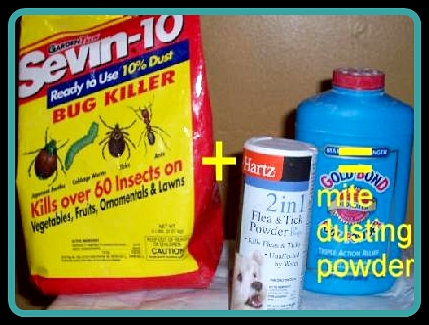
MITE DUSTING POWDER: An empty talc bottle that is partially filled with Sevin 10% dust and Hartz Flea & Tick Powder can be an effective miticide. Use 5 parts Sevin to 1 part Hartz, and make the container about half full. The dusting powder can be puffed onto the carpet, in the car, behind cabinets, in closets, etc. Avoid breathing the dust. A non-toxic mite dusting powder can be made with a 50/50 mixture of Orthoboric Acid powder (used for cockroaches) and Diatomaceous Earth.
Daily vacuuming is one of the most important things to do for reducing mite activity in the home. A small hand held vac is crucial for all the surface cleaning. You can use it on your clothing, on your skin, small surfaces like the computer, furniture, etc. The filter should be strong enough to prevent them from escaping. Duct tape the opening after use to prevent the mites from escaping. When using an upright floor vac on carpeting, be sure to vacuum in hidden areas as mites tend to hide during the day. Seal the end of the bag with duct tape after use and put it in the freezer until it is used again. Bagless vacs are not a good idea. For the car and for remote locations, a cordless vac can be used, although a car wash vac is more powerful and should be used frequently.
Household furniture is another place where bird mites like to hide. They seem to have an affinity for cotton and most fabrics. Leather and wood furniture is preferred to upholstered furniture, as it is much easier to clean and less susceptible to infestation. The mite dusting powder can be applied to the underside of furniture.
Remove clutter from living spaces to minimize the places bird mites can hide. They generally will hide during the day, and so stacks of magazines, newspapers, etc, should be discarded. Personal items should be kept in sealed plastic bags whenever possible. Mothballs can be added to the storage bags as needed.
AUTOMOBILE
The automobile can be a major headache for those afflicted with mites. They can burrow into the headliner, the seats, the carpeting, in the dash, etc. Leather seats are preferred to clothe seats, and even a sun roof can help keep the mites away some while driving. Mite dusting powder can be applied to the carpeting. If using a fogger: Turn the heater on high for a few minutes to stimulate mite activity. Fog in the evening and make sure the outside air vent and windows are closed, allow to stay closed until morning. Remove a battery terminal to eliminate any risk of electrical problems. Cover the plastic on the dash with something to prevent the aerosol from fading the clear plastic. Raid makes a home fogger with Cypermethrin that can be used in the car (using the precautions mentioned). A good alternative that is more ecofriendly is Premo Guard which can be sprayed in the car without a fogger
Other tips for reducing mite activity in the car include: Vacuuming at a car wash, hanging a no-pest-strip from the rear view mirror at night, keeping a cordless vac handy, using a lint roller for pulling them off the skin, placing Bounce fabric sheets in all the seats cushions, placing the car in the hot sun in the summer, and in the winter keep the windows down slightly on cold nights (as extreme temperatures will limit their ability to reproduce and aggressively bite).
Regarding insecticides; Pyrethrin and Permithrin are not effective against bird mites, don’t waste your money on these products. Better choices are those with Tralomethrin, Bifenthrin, Beta-Cyfluthrin or Esfenvalerate. It is important to vary the type of chemicals used every once in a while as they become tolerant to most products eventually.
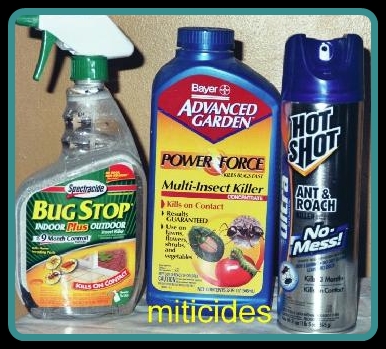
Some effective miticides include Spectracide’s ‘Bug Stop’ with Lamba-Cyhalothrin, Bayer’s ‘Power Force’ with Beta-Cyfluthrin (concentrate), and Hot Shot’s ‘Ultra’ with Imiprothrin and Esfenvalerate.
WARNING…Always use caution with insecticides and other chemical products, especially in a household with children or pets. Everyone’s tolerance to chemical exposure is different, so please consult your health care provider if uncertain.
HYGIENE
BATHING & SHOWERING
Thorough skin cleansing is important daily; to reduce the mite itching and biting. Showering is often more effective than bathing, although some have reported good success with a hot bath using Epsom salt, Borax, Sea Salt, etc. Mites will not die in warm water and so just sitting in a tub will not help. Whether taking a shower or bath, use a loofah scrub pad to remove mites from the skin. Add Epsom salt to a loofah scrub pouch and allow it to dissolve while scrubbing vigorously.
Coal Tar is very effective for itchy skin, and a product highly recommended is Denorex ‘Therapeutic Strength’ shampoo, which has 2.5% Coal Tar. This is not only used as a hair shampoo, but as a body wash. It is more effective to shower completely first thing in the morning and the last thing at night. A concentrated Coal Tar soap is available at some health food stores. At times after showering or bathing it may be necessary to use a diluted bleach solution to relieve the intense itching and kill the mites on the skin. Spritz this on with a spray bottle (avoid getting it in the eyes), and allow to stay on for a minute or so. After drying off use a medicated talc with menthol, such as Gold Bond ‘extra strength’. The tub/shower should also be sprayed with a diluted bleach solution after use.
SKIN TREATMENT
For the frequently intense itching and skin irritation, a strong anti-itch medication can be helpful. Lanacane ‘Maximum Strength’ works good. Even a muscle pain relieving product, like ‘extra strength’ Ben-Gay with menthol and camphor, can often help ease the irritation. Some have had success with Arrid Extra Dry antiperspirant for getting mites off the skin. The active ingredient is Aluminum Chlorohydrate 24%. It seems to be effective for repelling or killing the mites, and can also be sprayed onto clothing, etc.
An anti-histamine can often help to reduce the irritation on the skin and reduce the sensation of biting. Some have reported that Zyrtec helps reduce the sensation of crawling and itching. And at night Benadryl can help with these symptoms, as well as to help the person relax and fall asleep. On occasion the physician or dermatologist may need to prescribe something stronger.
TIP: Take a Bounce fabric sheet and spray some orange oil cleaner onto the sheet. Rub the skin vigorously with the wetted sheet. It can provide some temporary relief from the biting and itching.
HAIR/SCALP
Sometimes bird mites will infest the scalp, especially those who have thick hair. Women frequently have complaints of mites on the scalp, especially at night. Some have resorted to drastically cutting their hair when the mites could not effectively be controlled. Coal tar shampoo can be effective. Also, a vinegar/water rinse can be useful when washing the hair and scalp. Some have also had success with a diluted lemon juice concentrate as a hair and scalp rinse. Tea Tree Oil, a known miticide, can be added to the shampoo. At bedtime, a shower cap can be worn. Place one or more Bounce fabric sheets in the cap to help repel the mites.
MOUTH
To keep mites out of the mouth and nose when sleeping, the following mixture can help: Mix together some sublimed sulfur powder and Vaseline in a small jar and apply around the lips and nose at night before bed. Sublimed sulfur (flower of sulfur) can be obtained from a drug store without a prescription. Some have had good success using either Sulfur 8 or Aquaphor, applied to the skin at night. Others have recommended an anti-fungal cream applied around the mouth, nose and even genitals at night. Wearing a flea&tick collar around the neck at night may also help. Other solutions include putting Bounce fabric sheets or menthol crystals in the bed to repel them. Gargle with full strength original flavor Listerine daily when they are in the mouth.
NOSTRILS
Saline nasal flush is good for clearing mites out of the nose and sinus cavities. Obtain ‘sea salt’ from a health food store, mix about 1 tsp of salt with about 2 ounces of warm water, and mix it until it dissolves. Use a small syringe bulb (like what is used for flushing out ear wax), and fill this with the solution. Tilt your head back and apply the warm salt water solution into your nostrils and sinuses, and then flush it out completely. Another option would be to make a Hydrogen Peroxide and warm water solution to flush out the nostrils. You may need to do this a time or two each day, especially in the morning if the mites were active at night.
EARS
Mack’s silicone earplugs are effective for keeping mites out of the ears at night while sleeping. During the day, a dropper bottle that has a 50/50 solution of rubbing alcohol and white vinegar, can be effective for clearing mites out of the ears. For ears that itch, hydrogen peroxide can be used. Leave it in for a couple of minutes and then clear it out completely.
EYES
To keep mites out of the eyes while sleeping, swimming goggles are effective. The low-profile type are less obtrusive and more comfortable to wear. Be sure that they are snug fitting around the edges in order to keep the mites away. For irritated eyes, boric acid eye wash is effective, following the directions on the label.
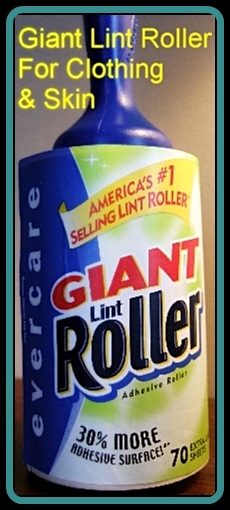
CLOTHES/LINENS
A good lint roller can be effective for getting mites off your clothing and skin. Change the tape frequently. Even a strip of duct tape can be used to pull crawling mites off the skin. A small hand held cordless vacuum is often effective when mites are infesting clothes. Bounce fabric sheets act as a mite repellent and can be put in clothing and shoes worn during the day to reduce the amount of crawling and biting.
Bed linens that are 100% cotton, such as flannel sheets, can more easily become infested and are harder to clean than synthetic fabrics, such as polyester or even satin. The same goes for clothes worn to bed. Some people report having better luck with ‘jump suits’ or jogging outfits that are synthetic and are tightly woven; which makes it more difficult for mites to penetrate.
TIP: Use the chemical type of mothballs with Paradichlorobenzene, not the ‘old fashion’ type, when storing clothing, etc. Keep in mind the chemical can attack some plastics, so precaution is needed for some items.
Clothes which are contaminated should be kept in a heavy duty plastic trash bag containing mothballs. (Use the chemical type with Paradichlorobenzene, not the ‘old fashion’ type mothballs.) Modern mothballs have a scent that does not linger in clothing, and the chemical is effective against mites and the eggs. You can also add a Hot Shot ‘no-pest strip’ (that contains Dichlorovos) to the bag. Clothes that are infested may need to be laundered after wearing only once. The same goes for bed linen that is heavily infested.
Update: A new product, a Laundry Additive has come on the market which you can try, Premo Laundry Additive. (please report results back to us)
Frequent laundering of clothing and bed linens is important to keep mites under control. Use the hottest water possible and add about a cup or two of ammonia to the wash. Bleach can be used with white materials and bed linens. It may be necessary to turn up the hot water tank to at least 135 degrees F in order to be effective. (This may not be an option in a household where toddlers can turn on faucets, as the water could be scalding.) Epsom salt or Borax can also be added to the water. Clothes dryer should be on the highest heat setting possible. Gas dryers tend to get hotter than electric ones. Place a couple of Bounce fabric sheets in the dryer and make sure clothes stay in for a long period of time. Clothing should be steam ironed on the high heat setting before being worn. Even socks and underclothes should be steam ironed. Clean clothes should be stored in containers with mothballs until they are ready to be worn.
TIP: Invest in a good quality steam iron (with burst-of-steam) for the daily ironing that needs to be done.
LAUNDRY TIP:
Put in the laundry soap, ammonia and Epsom salt (or Borax) with the water prior to putting in the clothing. (Bleach instead of ammonia for some items, but be sure to never mix bleach with ammonia as it produces toxic gases). Fill the washing machine only half full of water for the load being washed. (This produces a more concentrated wash). Let the machine agitate the load for a few minutes to saturate the soap and chemicals in with the wash load completely. Then shut off the machine and let it sit for about a half hour or more. Then turn the machine back on to complete the cycle. Although the water will have cooled off somewhat, it can still help kill the mites and eggs more effectively this way; as most machines cycle from the hot water wash to the cold water rinse fairly quickly. Front loaders are less effective for cleaning using this method because they do not saturate the water as completely.
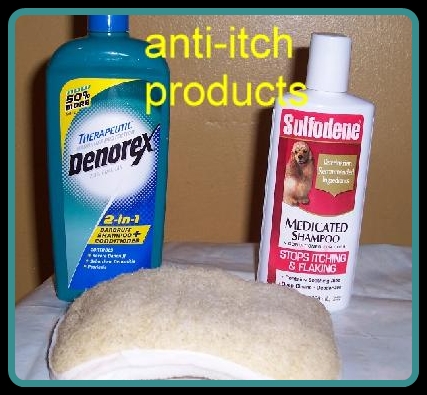
Denorex, Sulfodene and a good loofah scrub pad should be in your arsenal in the war against bird mites. These are very effective skin care products.
PET HYGIENE
Like in humans, mites prefer warm, moist areas; and will get in the ears, mouth, and even eyes. This will be especially true in pets, as mites will have a harder time penetrating the animal’s skin. Some have reported good success with ‘Thiabendazole’ for their pets. It is a medicine to treat parasites that can be taken internally or applied topically; such as to the dog or cat’s ears. It has to be prescribed by the Vet. ‘Mitaban’, which is used to treat mange mites on dogs, may be beneficial. The active ingredient is Amitraz, which is a very effective miticide. It can be applied as a dip to treat the coat. It has to be prescribed by the Vet. Some have also had success with ‘Frontline’ products for pets. For internal infestation, Ivermectin is no longer the drug of choice for pets with a bird mite infestation. A research study showed that the amount of the drug needed to effectively reduce the mite population of D. Gallinae was near the lethal limit for the host mammal. And a Vet will not usually prescribe the higher dosage required for a bird mite infestation.
Lime-sulfur dip is a safe alternative for ridding parasites from the animal’s fur, and can be obtained without a prescription for dogs and cats.An anti-parasitic animal shampoo called ‘Rotenone’, by Goodwinol, may be effective against bird mites. It is derived from the Derris and Cube Roots, and it is often used by Vets for the treatment of Demodectic mites, lice, and fleas. The shampoo is basically Sulfur, Rotenone, and Benzocaine. It is safe for use on dogs and cats. They also make an ointment that can be used to treat infested ears. Sulfodene, which is made for dogs but is beneficial to human sufferers as well, can be used to treat the animal’s irritated skin as it contains sulfur and coal tar. The ‘Preventic’ tick collar for dogs contains Amitraz and may be beneficial also, and can be obtained without a prescription. As with humans, the environment has to be aggressively cleaned. Bedding should be washed and changed frequently.
NATURAL REMEDIES
There are some natural non-toxic alternatives that may be beneficial; even if they just bring some short-term relief for irritated skin, or as a deterrent from the biting. Unfortunately, many of these would not be considered a means to completely eradicate mites. The list is not comprehensive, and as more remedies are recommended or as further research indicates, they will be added.
- Limonene or d-Limonene (orange oil), extracted from citrus peel, is shown to be effective against external pests; including fleas, lice, mites, and ticks, and is virtually nontoxic to warm-blooded mammals. It is sold in concentrate or ready mixed spray bottle, often labeled as a cleaner/degreaser. It can be sprayed on bedding, clothing, in bathrooms, etc.
- Some essential oils have anti-parasitic properties and have been shown to be very effective against mites; these include eucalyptus, cedarwood, peppermint, lavender, and lemongrass. Even burning incense in a room can limit mite activity; as it can disrupt their ability to communicate. A hot bath can be prepared with oils, or a spray bottle solution can be made for applying on the skin. There was a research study which confirmed that some plant essential oils were toxic to D. Gallinae, but only with direct contact.
- Over the past few years more readers have reported using Premo Guard Bed Bug & Mite Spray. While not for use on skin or pets, it has shown to be effective in killing mites in home or car with daily use. Premo can also be used as a laundry additive, 1/2 cup per load.
- Cedar oil based products have successfully been used by some for eradicating bird mites in the home. It is not inexpensive and it has to be applied with a ULV fogger and the user must wear a breathing mask and eye protection, according to the Cedarcide website protocol.
This natural-based mosquito repellent is effective as a mite repellent; bringing a few hours of relief from the crawling and biting. The active ingredient is 40% Lemon-Eucalyptus oil.
- Neem oil has anti-parasitic properties. One study showed that mite traps with 20% Neem Oil reduced the bird mite population 95% versus the non-treated areas.
- Diatomaceous Earth (DE) is a non-toxic pesticide that kills insects by shredding their exoskeleton and drying them out. Some research has shown that D. Gallinae resists desiccation, possibly due to its small size. A newer product, called Ecomite, claims to be effective against mites. DE can be applied like the mite dusting powder; into the carpet, in wall spaces and other confined areas. Farmers sometimes liberally apply DE to clothing when working with chickens infested by mites.
- Boric acid powder (Borate) is virtually non-toxic to humans but lethal to small bugs. Often sold as a cockroach powder. It can be used as a mite dusting powder for application to carpeting and other areas. Borax laundry booster, which is high in borate, can be effective when washing clothes which are infested.
- Listerine mouthwash can be used on the skin to bring some relief from the itching, and it also acts as a repellent when spritzed on the skin using a spray bottle.
- Mites do not like menthol, and putting some menthol crystals in an old sock and placing this under the bed sheets may help in keeping them away at night. Vicks ‘VapoRub’ contains menthol and camphor, and it can be applied to the skin at night.
- Bounce fabric sheets can be used as a mite repellant. Place some in clothing, shoes, etc.; anyplace where mites are bothersome. Orange oil cleaner sprayed on a Bounce sheet and then wiped on the skin, is effective for reducing the itching and biting.
- Epsom salt, which has a high sulfur content, can be effective against mites. A couple of cupfuls can be added to hot water when bathing. Epsom salt can also be used when doing laundry with hot water.
- Vinegar can be used to reduce the itching and skin irritation. A spray bottle of vinegar and salt water is also effective as a mite repellent.
- Dawn dishwashing soap diluted in a spray bottle has been effective for some, and it can be safely sprayed on many surfaces. The surfactants in Dawn apparently are effective at breaking down the mite’s exoskeleton. Mites cannot build up an immunity to this type of treatment, as with pesticides.
- Windex with Ammonia-D is reportedly successful for killing bird mites. Precaution should be used when spraying this on certain surfaces.
- Some petroleum based products can be applied to the skin to repel mites while sleeping. Products such as Aquaphor, Sulfur 8, baby oil, or Vaseline mixed with sublimed sulfur, can be effective.
SUMMARY:
- Remove the source of mites (if known)
- PCO consultation if possible
- Bug spray and mite dusting powder
- Daily vacuuming and cleaning
- Lint roller for clothing and skin
- Frequent bathing / showering
- Seal mattress, box spring and pillows with vinyl protectors
- Benadryl or sleep aid at night
- Infested items in sealed bags with mothballs
- Frequent laundering of clothing and bed linen
- Steam iron all clothing on high heat before wearing
- Patience, Prayer, and Perseverance…

